Fresh Herbs 101: How to Pick, Dry and Store Fresh Herbs
Growing up my mom had a couple of big barrels of gorgeous fresh herbs in their garden that we used all the time. Food tastes SO much better with fresh herbs whether it’s rosemary chicken or fresh basil pesto or basil spaghetti sauce.
When I first got married, I knew how much my husband and I loved cilantro so I bought a couple plants of that and evidence of my black thumb became very apparent. I didn’t know what the heck I was doing and I maybe got a couple tablespoons of chopped cilantro before my plants completely died. Thankfully, I have come quite a ways since that day.
Growing your own herbs is really quite easy and can really save you a lot of money along with being fun. Buying fresh herbs in the store can really get pricey and they only last for a few days right out of the grocery store so if they get buried in the back of your fridge, or you order take out a couple more times that week than you intended when you bought them at the grocery store, before you know it you might be throwing away precious fresh herbs. If you grow them yourself, you can go out and pick them fresh just minutes from when you’re going to use them. Talk about fresh!
Better Homes and Gardens shared some really awesome tips about picking, drying and storing your own herbs that I thought would be helpful to share if you have any black thumb tendencies like me.
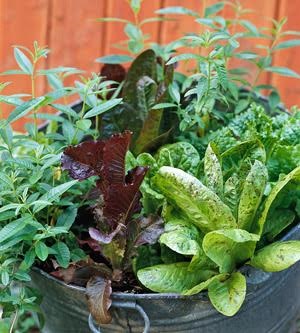
1. Summer cuts. Throughout summer, snip plants regularly to encourage branching and new growth. Harvest successive cuttings whenever you need fresh herbs. Generally, cut no more than one-third of the stem's length. Exceptions include chives and lavender: When they bloom, harvest the flowering stems at ground level. Use the snippets of culinary herbs in cooking. Use other fresh herbs to make bouquets and teas or for a delightful herbal bath.
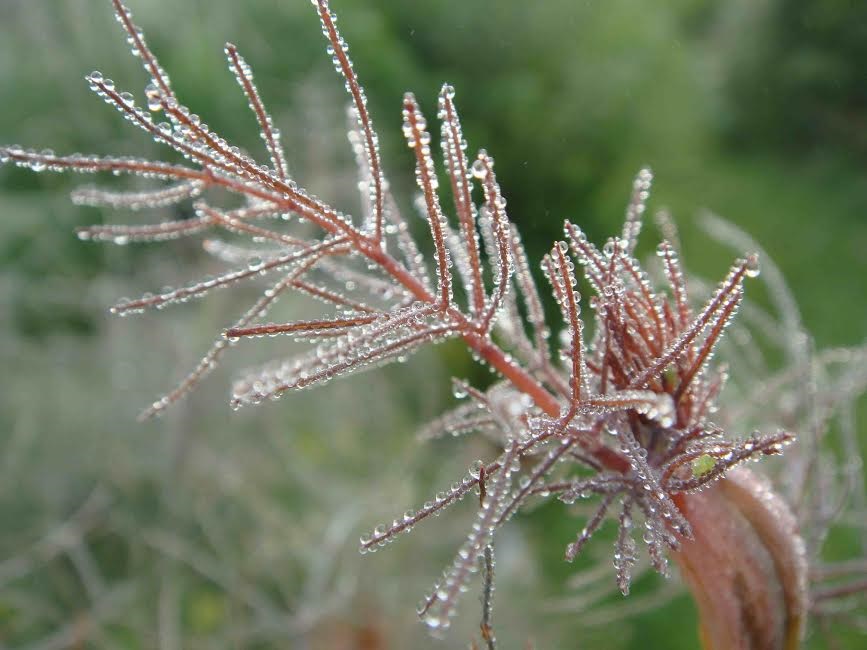
2. Harvest handfuls. Gather herbs early in the day, after the dew has dried but before the sun bakes the plants' essential oils. If you're harvesting an herb's leaves, cut the stems at their peak, when the flowers start to form. If you like, gather the blooms of herbs when they develop fully. If you're after an herb's seeds, wait until they mature and begin to turn brown before harvesting the seeds heads.
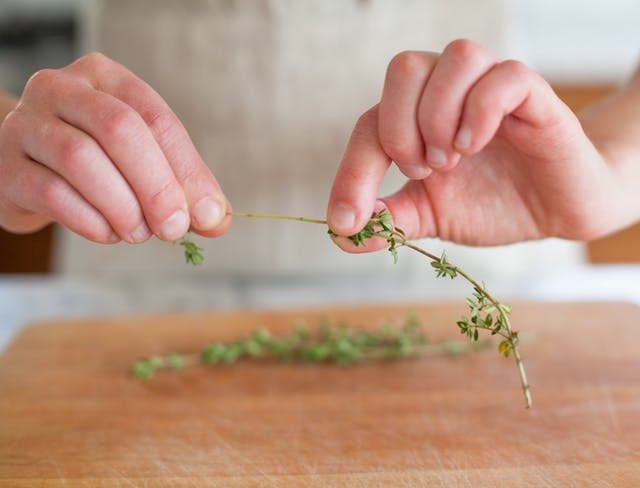
3. Strip leaves. To prepare leafy stems for use in cooking, strip the leaves off the stems by sliding your thumb and forefinger from top to bottom. Snip off thicker leaves, such as those of parsley, bay, or tansy, which don't strip off readily. If you plan to remove the herbs before serving the food, skip stripping and use whole stems. Tie them together for easier removal from whatever you are cooking.
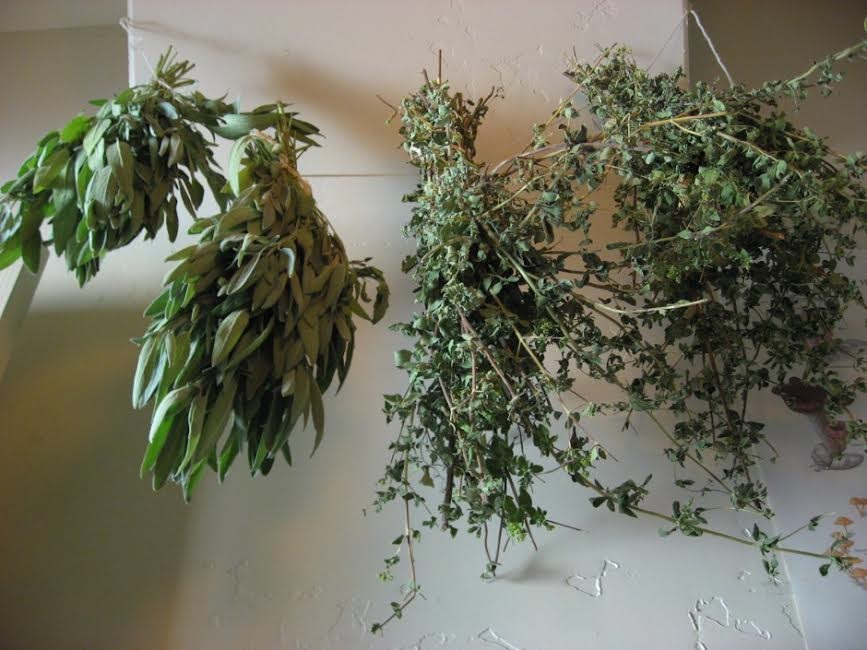
4. Herb bunches. The traditional way to preserve herbs entails gathering small bunches of 10 to 15 stems and hanging them in a warm, airy place to dry. Wrap stems tightly with a rubber band or tie them with twine. Hang the bunches on a drying rack, on the rung of a hanger, or from a nail. Drying can take up to three weeks, depending on the plant and its moisture content. Strip crisp-dry leaves off stems before storing them. Dry seed heads by placing a paper bag over them and tying it shut around the stems. Place only one type of herb in each bag and label it. The seeds will drop into the bag as they dry. Let seeds dry for several weeks before storing them properly.
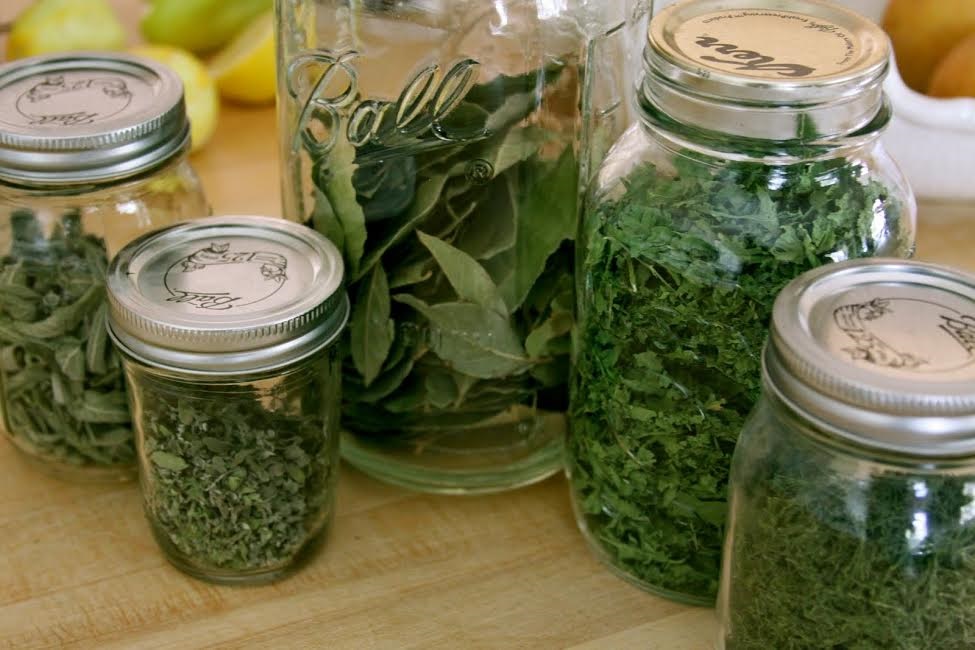
5. Proper storage. Store dried herbs in airtight glass or ceramic containers away from light and heat (never on or near the stove) to protect their flavor and fragrance. Keep the leaves whole until used (crushing leaves releases their flavor). Use dried herbs within a year of harvesting.
Do you have any special tips for taking care of herbs you’d like to share with us? Feel free to share in the comments below :)
- www.motherearthliving.com
- www.extortherbs.com
- www.thebaldgourmet.com
- www.completeness.co.uk
- www.thekitchn.com
- www.bhg.com
 Mary Richardson
Mary Richardson
Weekly Newsletter Contributor since 2014
Email the author! mary@dvo.com
